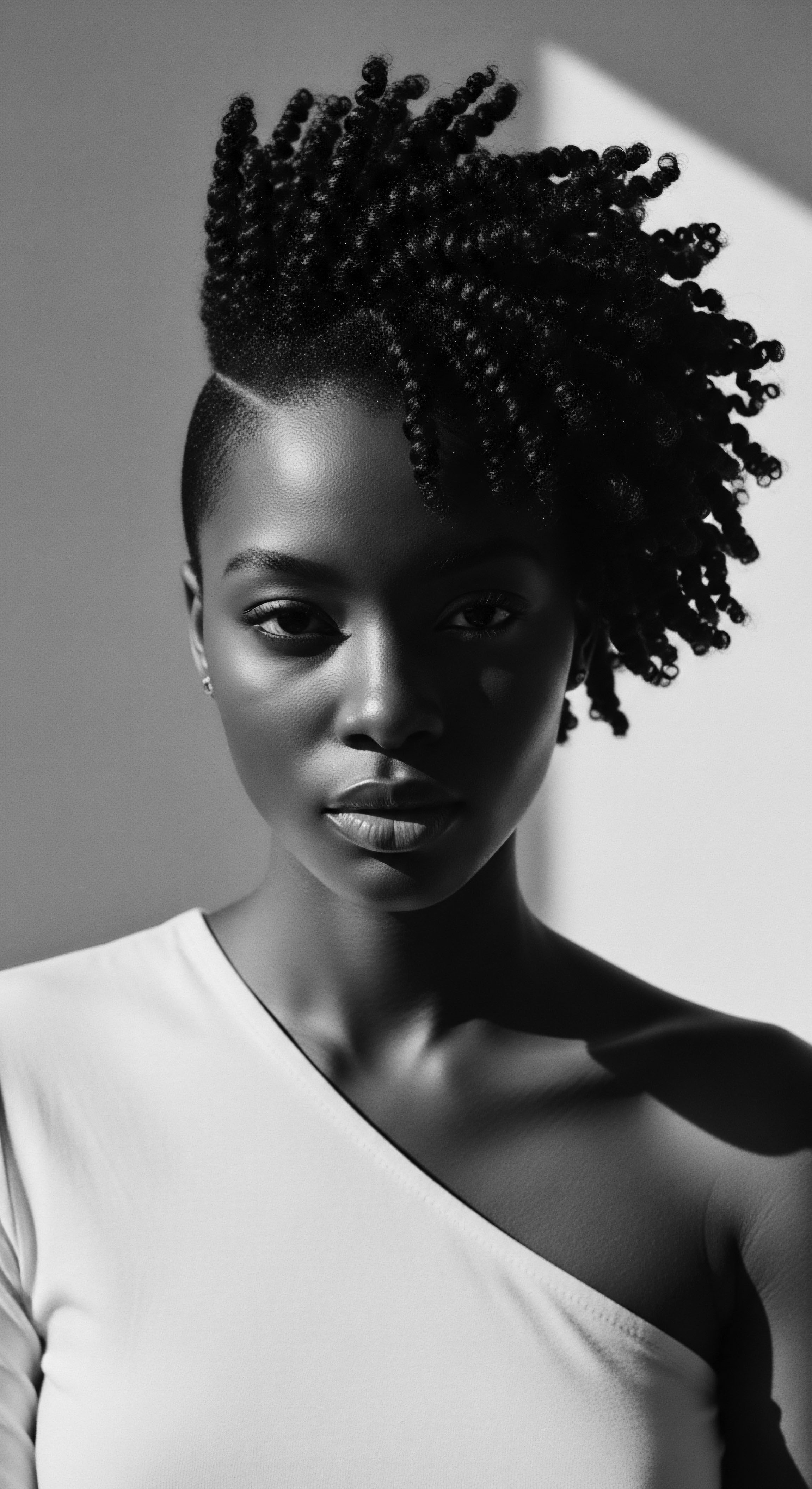
Fundamentals
The concept of Cultural Aesthetics, particularly when viewed through the profound lens of textured hair heritage, transcends a mere visual appreciation of beauty. It stands as a vibrant, living explanation, a foundational delineation of how communal values, ancestral practices, and historical experiences shape the very perception and treatment of hair within a specific cultural context. For Roothea, this term speaks to the deep, resonant connection between the physical appearance of hair and the collective identity, wisdom, and resilience of a people. It is not simply about what is deemed ‘beautiful’ in a fleeting moment, but rather, what carries significance, what holds ancestral memory, and what expresses the enduring spirit of a community through its strands.
At its most fundamental level, Cultural Aesthetics in the context of textured hair describes the deeply embedded principles and shared understandings that govern how hair is styled, adorned, and cared for within Black and mixed-race communities across generations. This includes the collective recognition of certain textures, patterns, and forms as inherently meaningful, often carrying symbolic weight. The very curl, coil, or wave pattern becomes a canvas for expressing lineage, status, spirituality, and resistance. The significance of these patterns is not accidental; it is an inherited understanding, a visual language passed down through the ages.
Cultural Aesthetics, for textured hair, represents the inherited wisdom and communal values that shape how hair is perceived, styled, and honored across generations within Black and mixed-race communities.
Consider the earliest expressions of hair care, often born from necessity and environment. In ancient African societies, hair was not merely an appendage; it was a conduit to the divine, a marker of tribal affiliation, age, and marital status. The techniques developed—braiding, twisting, knotting—were not just practical solutions for managing diverse textures in challenging climates; they were acts of artistic expression and social communication. The Delineation of specific styles often conveyed messages understood only by those within the cultural group, signifying a deep, unspoken language of hair.
This initial understanding helps us grasp the fundamental Meaning ❉ Cultural Aesthetics is the framework through which hair is understood, valued, and expressed within a specific cultural group, reflecting its history, beliefs, and shared experiences. For textured hair, this framework is particularly rich, stemming from millennia of diverse African traditions that adapted and persisted through various historical migrations and transformations.
- Adornment Practices ❉ The selection and placement of cowrie shells, beads, or gold thread within hairstyles in ancient African kingdoms were not arbitrary choices but conveyed specific social standing or spiritual connections.
- Styling Techniques ❉ Braiding patterns like cornrows or intricate twists, while practical for managing hair, also served as forms of artistic expression and community bonding, often requiring hours of communal effort.
- Hair as Identity ❉ The condition and style of one’s hair could communicate marital status, age, or tribal allegiance, making it a visible marker of personal and communal identity.
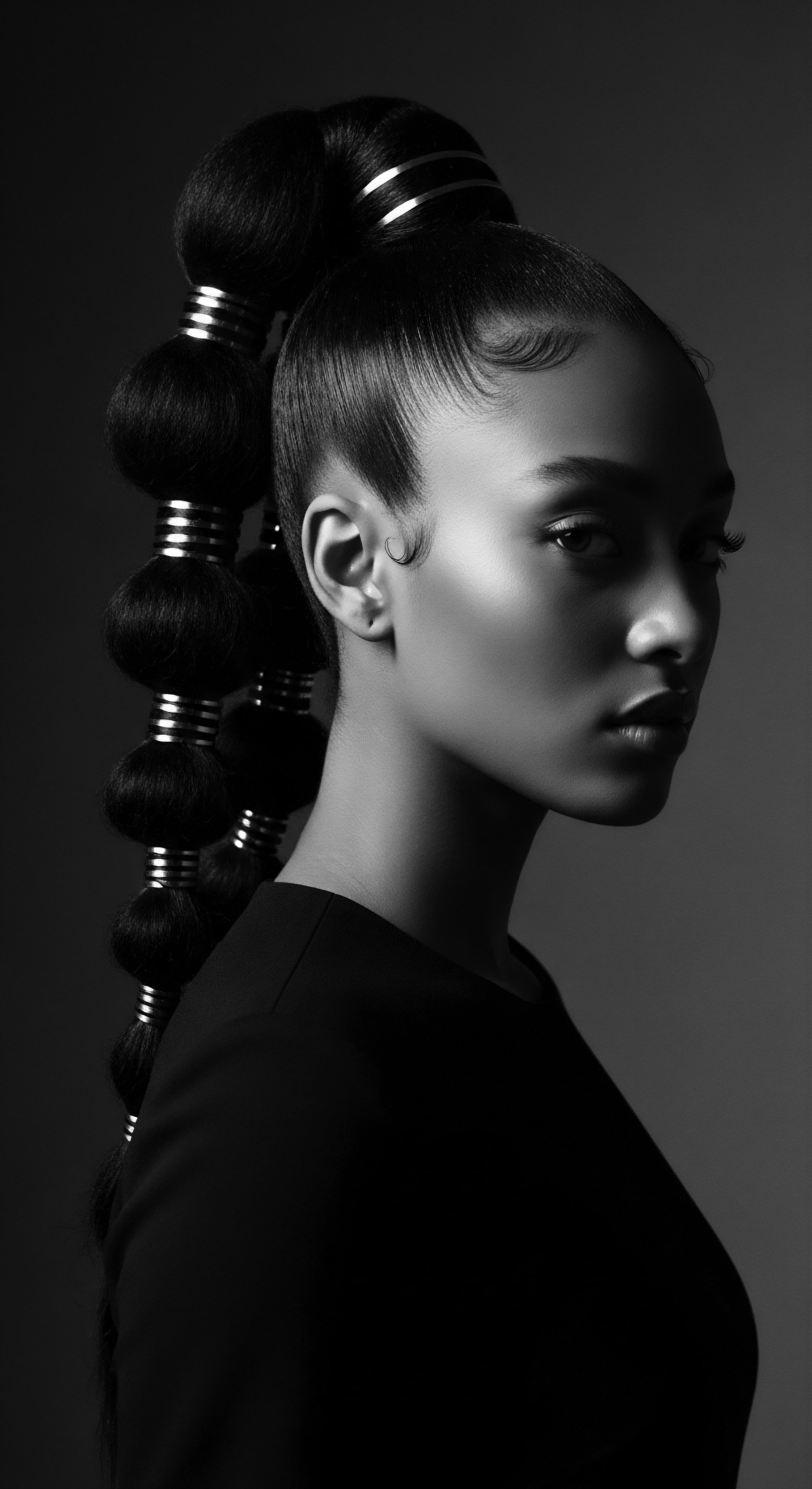
Intermediate
Moving beyond the foundational aspects, an intermediate understanding of Cultural Aesthetics reveals its dynamic nature, its capacity to adapt and persist through profound societal shifts, particularly within the African diaspora. Here, the explanation of Cultural Aesthetics becomes more layered, encompassing not only the direct transmission of practices but also the innovative ways in which these practices were preserved, transformed, and reclaimed in the face of adversity. The very Interpretation of hair’s role shifted, yet its inherent cultural significance remained a constant, albeit often contested, force.
The transatlantic slave trade, a cataclysmic rupture, attempted to sever enslaved Africans from their ancestral traditions, including their hair practices. Yet, even in the most brutal conditions, the Cultural Aesthetics of textured hair persisted, albeit in modified forms. Hair became a clandestine canvas for communication, a silent act of resistance, and a profound link to a stolen past.
Seeds, rice, and even messages were hidden within intricate braids, allowing knowledge and hope to endure. This period profoundly shaped the Significance of hair, transforming it into a symbol of resilience and an unspoken testament to identity.
The enduring power of Cultural Aesthetics lies in its ability to adapt and serve as a silent testament to identity and resilience, particularly evident in the diasporic journey of textured hair.
The ingenuity employed to maintain hair, despite limited resources and hostile environments, speaks volumes about the intrinsic value placed upon these traditions. Enslaved people often used natural ingredients found in their new environments, adapting ancestral knowledge of plants and oils to care for their hair. This ongoing adaptation highlights the living, breathing quality of Cultural Aesthetics—it is not static but a continuous process of re-creation and affirmation. The practices that survived, such as oiling, protective styles, and communal grooming, carried forward the genetic memory of a people, embedding the care of textured hair within the fabric of their cultural survival.
The post-emancipation era saw further evolution. As Black communities established themselves, hair salons became vital social hubs, spaces where cultural aesthetics were discussed, refined, and passed down. These establishments were more than just places for styling; they were sanctuaries of shared experience, knowledge exchange, and communal support, reinforcing the collective Delineation of beauty and care.
Madam C.J. Walker’s pioneering work, for instance, while often simplified to a focus on hair straightening, also addressed hair health and provided economic independence, demonstrating how hair care became intertwined with social advancement and self-determination within the Cultural Aesthetics framework.
The collective memory of textured hair, therefore, is not solely one of oppression but also one of incredible innovation and perseverance. The Meaning of hair in these communities expanded to encompass not just cultural belonging but also personal agency and a visible rejection of imposed beauty standards. The continuity of specific care rituals and styling techniques, often passed from elder to youth, forms a tender thread connecting generations.
- Adaptation of Ingredients ❉ The resourceful use of readily available ingredients like castor oil, coconut oil, and various plant extracts in the diaspora mirrored ancestral practices of using indigenous botanicals for hair nourishment and protection.
- Hair as Communication ❉ During slavery, intricate braided patterns could secretly convey escape routes or family affiliations, transforming hair into a coded language of survival.
- Communal Grooming ❉ The act of hair braiding and styling became a cherished communal activity, strengthening familial bonds and transmitting cultural knowledge across generations.
This intermediate stage emphasizes that Cultural Aesthetics is not merely about historical practices but about the enduring spirit that adapted and re-formed these practices, ensuring their survival and continued Significance in the present day. It underscores how hair became a profound medium for maintaining identity and fostering community amidst immense challenges.
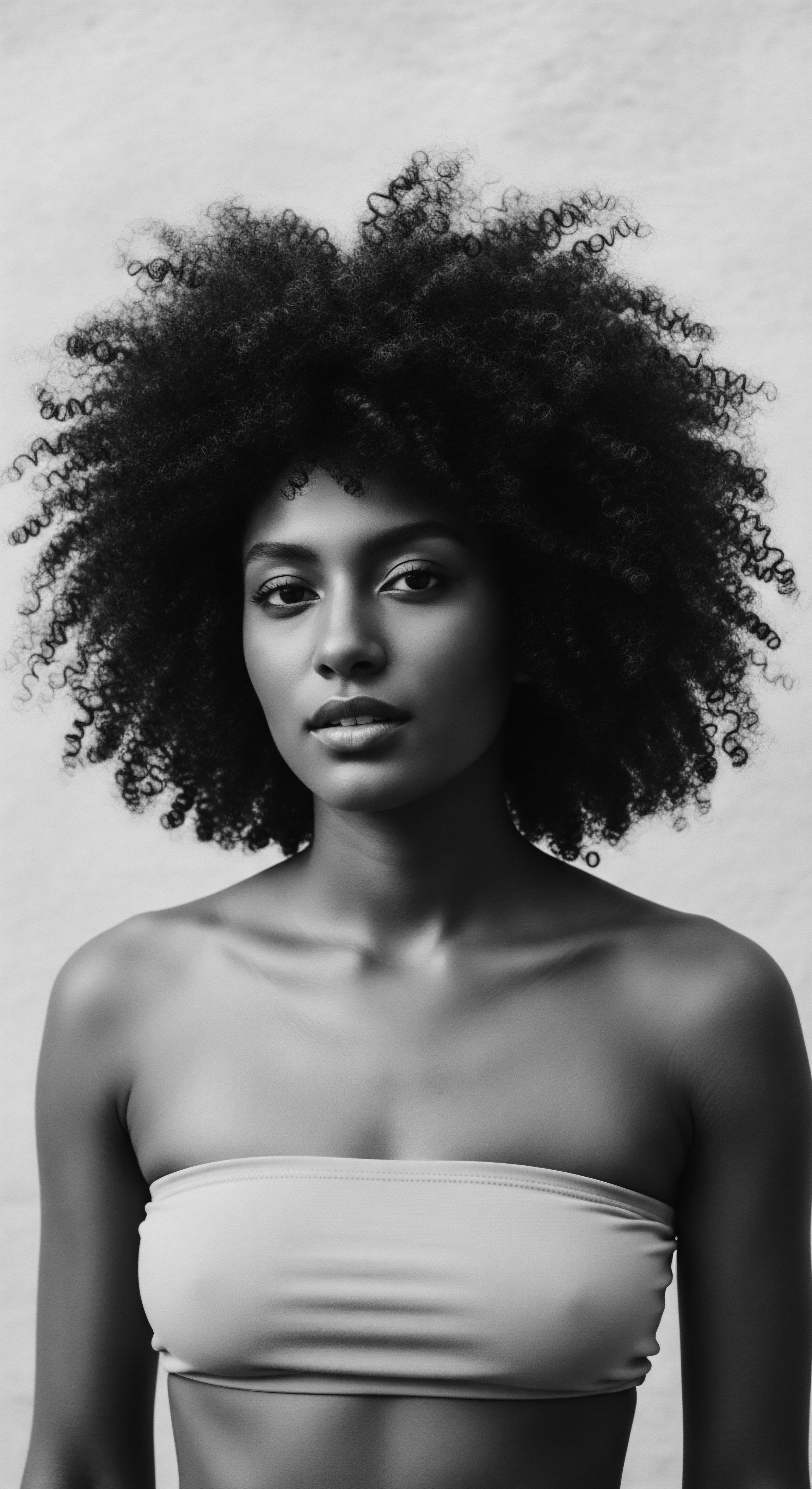
Academic
The academic Definition of Cultural Aesthetics, particularly as it pertains to textured hair, posits it as a complex, dynamic semiotic system, deeply interwoven with socio-historical formations, identity construction, and the politics of appearance within Black and mixed-race diasporic communities. It is a rigorous examination of how collective and individual perceptions of beauty, health, and social meaning are inscribed upon and expressed through hair, often serving as a site of both oppression and profound resistance. This analytical lens extends beyond mere descriptive accounts of hairstyles, seeking to unpack the epistemic foundations and lived experiences that give textured hair its profound cultural Meaning and historical weight.
The theoretical underpinnings of Cultural Aesthetics in this context draw from anthropology, sociology, critical race theory, and ethnobotany. It recognizes hair not as a static biological entity but as a culturally constructed artifact, imbued with layers of historical trauma, ancestral wisdom, and contemporary negotiation. The Elucidation of this concept demands an exploration of how external forces, such as colonial beauty standards, have attempted to subjugate and erase indigenous hair practices, and conversely, how communities have continually re-asserted their aesthetic autonomy. This constant interplay between external pressures and internal resilience shapes the ongoing evolution of Cultural Aesthetics.
A particularly illuminating instance of this interplay is the historical imposition of the Tignon Laws in Spanish colonial Louisiana, enacted in 1786. These laws mandated that free women of color wear a tignon (a type of head covering) to conceal their elaborate hairstyles and textured hair. The stated purpose was to curb their perceived social and economic threat by diminishing their public allure, which was often tied to their sophisticated hair artistry and adornments. This was a direct, state-sanctioned attempt to dismantle the Cultural Aesthetics of Black women, recognizing its power as a marker of identity, status, and beauty that challenged the prevailing racial hierarchy.
The Tignon Laws stand as a stark historical testament to the systemic attempts to suppress the Cultural Aesthetics of textured hair, recognizing its inherent power as a symbol of identity and resistance.
However, rather than suppressing the inherent aesthetic, the Tignon Laws inadvertently became a catalyst for its transformation and deeper entrenchment. Women of color adorned their tignons with exquisite fabrics, jewels, and intricate wraps, transforming a symbol of subjugation into a new form of sartorial expression that continued to command attention and convey identity. This historical example powerfully demonstrates the adaptive capacity of Cultural Aesthetics ❉ even when direct expression is curtailed, the underlying cultural Designation of hair as a site of meaning finds new avenues for manifestation.
The act of wearing the tignon became a defiant statement, a re-appropriation of a tool of oppression into an emblem of cultural pride and resilience. This narrative is further supported by historical analyses, such as those found in scholarly works like Gwendolyn Midlo Hall’s “Africans in Colonial Louisiana” (Hall, 1992), which meticulously documents the social and legal frameworks that sought to control the lives and appearances of free people of color, including their hair.
Furthermore, the academic lens scrutinizes the scientific validation of traditional hair care practices, revealing how ancestral wisdom often predated modern scientific understanding. For instance, the widespread traditional use of natural oils and butters (such as shea butter, palm oil, and various plant extracts) across African cultures for centuries was not merely anecdotal. Contemporary hair science now substantiates the benefits of these emollients in providing moisture, sealing the cuticle, and protecting the delicate structure of coiled and curly hair, which is prone to dryness and breakage due to its unique follicular morphology and fewer cuticle layers compared to straighter hair types. This convergence of traditional practice and scientific inquiry provides a compelling argument for the enduring Import of Cultural Aesthetics.
| Ancestral Practice/Ingredient Hair Oiling/Buttering (e.g. Shea, Palm, Castor) |
| Traditional Understanding/Purpose Nourishment, shine, protection from sun/elements, promoting growth. |
| Modern Scientific Validation/Mechanism Lipids provide emollient properties, reduce hygral fatigue, strengthen hair shaft, and minimize protein loss. |
| Ancestral Practice/Ingredient Protective Styling (Braids, Twists, Locs) |
| Traditional Understanding/Purpose Hair management, cultural expression, reduced tangling, preventing breakage. |
| Modern Scientific Validation/Mechanism Minimizes manipulation, reduces mechanical stress, protects ends, and retains length by limiting environmental exposure. |
| Ancestral Practice/Ingredient Scalp Massage with Botanicals |
| Traditional Understanding/Purpose Stimulation, promoting blood flow, alleviating dryness, spiritual cleansing. |
| Modern Scientific Validation/Mechanism Increases microcirculation, potentially enhancing nutrient delivery to follicles; certain botanicals possess anti-inflammatory or antimicrobial properties. |
| Ancestral Practice/Ingredient The enduring wisdom of ancestral hair care practices often finds contemporary affirmation through scientific inquiry, revealing a continuous thread of understanding. |
The academic discourse also critically examines the long-term consequences of historical hair subjugation, including internalized colorism and textureism, which continue to influence self-perception and beauty standards within Black and mixed-race communities. However, it simultaneously highlights the profound success insights derived from the reclamation movements—from the Black Power era’s embrace of the Afro to the contemporary natural hair movement. These movements are not merely trends; they are powerful re-assertions of Cultural Aesthetics, fostering psychological well-being, collective pride, and a renewed connection to ancestral lineage.
The ongoing dialogue surrounding hair texture, styling choices, and product development within these communities underscores the vibrant, active nature of Cultural Aesthetics as a field of continuous negotiation and self-definition. The Substance of this field lies in its capacity to shape identity, influence social interaction, and serve as a powerful conduit for cultural continuity and resistance.
The profound Essence of Cultural Aesthetics, therefore, is its capacity to embody a collective memory and a living heritage. It is a testament to how seemingly personal choices about hair are, in fact, deeply social, historical, and political acts, reflecting a continuous dialogue between individual expression and communal identity. This academic exploration provides a comprehensive framework for understanding the intricate relationship between textured hair, its ancestral practices, and its ongoing cultural Significance.
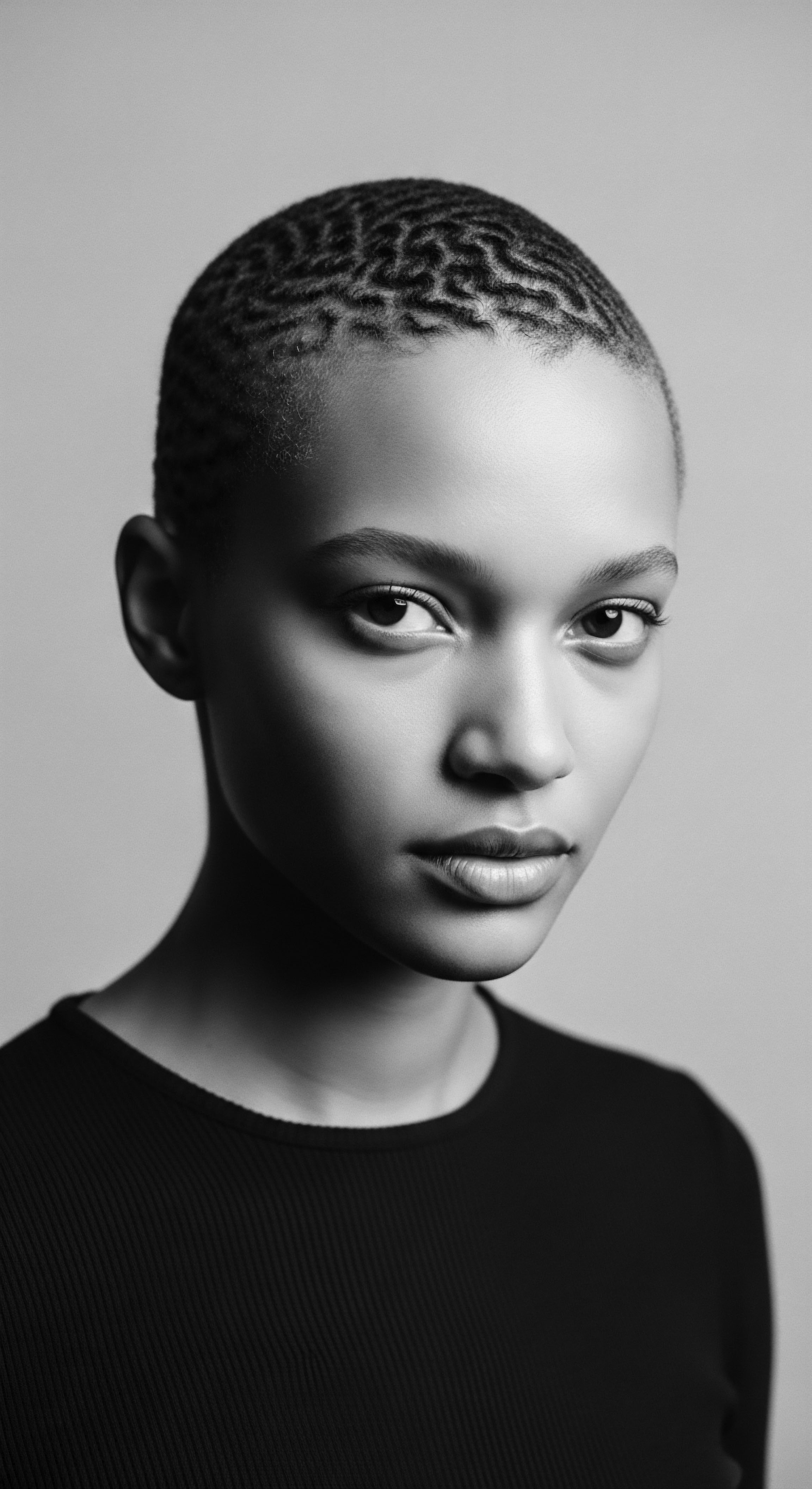
Reflection on the Heritage of Cultural Aesthetics
As we conclude this profound meditation on Cultural Aesthetics, particularly through the luminous lens of textured hair, we are reminded that hair is far more than mere keratin strands. It is a living archive, a repository of ancestral wisdom, a testament to enduring resilience, and a vibrant canvas for identity. The journey of Cultural Aesthetics, from the elemental biology of coils and curls to the intricate artistry of ancient braids, and then through the profound challenges and triumphs of the diaspora, truly embodies the “Soul of a Strand” ethos. Each curl, each wave, each twist carries echoes from the source, a tender thread connecting us to those who came before, and an unbound helix reaching towards futures yet to be shaped.
The practices of care, the communal rituals of grooming, and the expressive power of styling are not relics of a distant past but living traditions that continue to voice identity and shape destinies. The reclamation of textured hair, in all its glorious forms, is a powerful act of self-love and cultural affirmation, a direct lineage to the resilience of our ancestors. It is a continuous unfolding of beauty that defies imposed standards, celebrates diversity, and honors the deep, inherent meaning embedded within every strand.
This understanding of Cultural Aesthetics compels us to approach textured hair with reverence, recognizing its historical burdens and its boundless potential. It invites us to listen to the silent stories held within our hair, to learn from the ingenuity of those who preserved its legacy, and to contribute to its ongoing narrative with conscious care and profound appreciation. The heritage of Cultural Aesthetics is not a static concept; it is a dynamic, evolving testament to the spirit of a people, continuously re-affirming its beauty, strength, and unwavering connection to the past, present, and future.
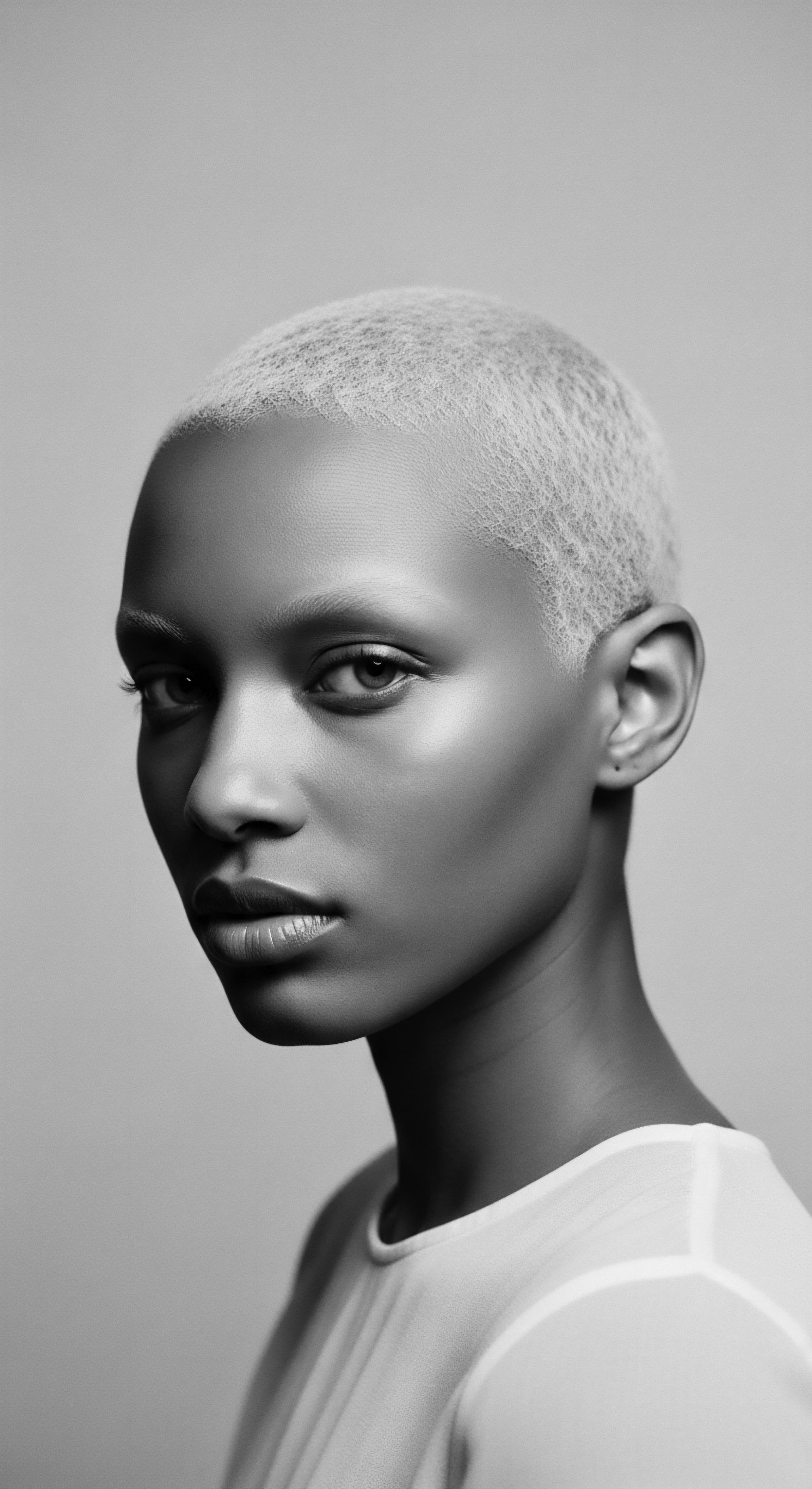
References
- Hall, G. M. (1992). Africans in Colonial Louisiana ❉ The Development of Afro-Creole Culture in the Eighteenth Century. Louisiana State University Press.
- Byrd, A. D. & Tharps, L. L. (2001). Hair Story ❉ Untangling the Roots of Black Hair in America. St. Martin’s Press.
- Mercer, K. (1994). Welcome to the Jungle ❉ New Positions in Black Cultural Studies. Routledge.
- Okeke-Agulu, C. (2015). Postcolonial Modernism ❉ Art and Decolonization in Twentieth-Century Nigeria. Duke University Press.
- Hooks, B. (1992). Black Looks ❉ Race and Representation. South End Press.
- Akbar, N. (1998). Light from Ancient Africa. New Mind Productions.
- Gittens, L. A. (2011). African American Hair ❉ A History of Style, Culture, and Politics. University of California Press.
- Opoku, A. A. (1978). African Traditional Religion ❉ An Introduction. Presbyterian Press.
